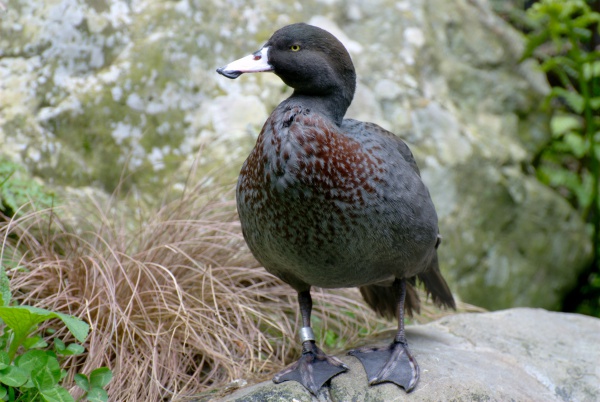Facts About Blue duck
The blue duck, also known as the whio, is a distinctive and intriguing bird native to New Zealand. It is the sole representative of its genus, Hymenolaimus, and is closely related to dabbling ducks. Its image is even featured on the reverse side of New Zealand's $10 banknote.
This bird is easily recognizable by its dark slate-grey plumage, a greenish sheen on its head, and a chestnut-flecked chest. Males are larger than females and have unique calls: males whistle, while females produce a rattling growl.
The exact evolutionary placement of the blue duck among other waterfowl remains uncertain, though DNA studies suggest it may be related to South American dabbling ducks. Blue ducks inhabit fast-flowing mountain rivers in New Zealand, where they nest in sheltered spots such as hollow logs and caves.
Primarily, blue ducks feed on aquatic invertebrates, especially caddisfly larvae, but they occasionally consume berries and fruits. Their breeding season spans from August to October. Females lay between 4 to 9 eggs, which they incubate for about 35 days. The chicks are fledge-ready at approximately 70 days old.
Sadly, blue ducks are an endangered species. They face threats from predators like stoats, competition for food from trout, and habitat alterations caused by hydroelectric projects. Conservation efforts are underway to protect them, including predator control and population re-establishment programs.
The IUCN classifies the blue duck as Endangered, with an estimated population of only 2,500 to 3,000 individuals. Initiatives like the Whio Forever Project strive to double the number of secure breeding habitats and enhance pest control measures to ensure the survival of this unique bird in New Zealand.
